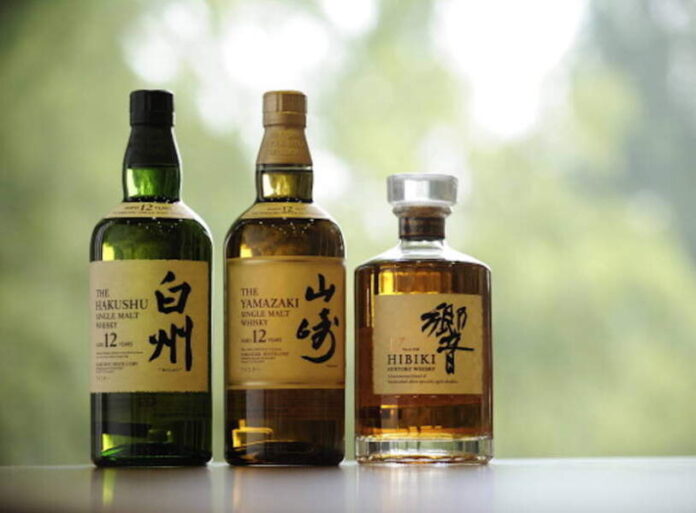Japanese Single malt whisky has been around for nearly 100 years, slowly gaining popularity and continuing to do so to this very day. There are so many varieties from Scottish whisky, to American and Irish whiskey- so what has made the Japanese single malt so popular throughout Japan and now into the world? To answer this question, we must first understand the history of the creation of the spirit.
Japanese Single Malt History
The roots of Japanese Whisky can be traced back to Shinjiro Torii, originally a pharmaceutical salesman and western liquor merchant, and Masataka Taketsuru, the first distilling executive Torii employed as they embarked on a journey to create what would become the first Japanese Whisky distillery.
Torii built this distillery in a suburb of Kyoto: Yamazaki. Known for the intensely fine quality of its water, it was here that he and Taketsuru set out on their new venture. Leading up to this partnership, Taketsuru had spent time researching and learning about the Scottish whisky-making practice, and this expertise heavily influenced the processes developed for the art of Japanese whisky.
The Influence of Scotch
Crafting this whisky presented a challenge to them after their first release in 1929 called Shirofuda, meaning “white label”. Those who tried this initial release were adverse to the intense smoky quality of the whisky. After this misstep, they came to the conclusion that in order to sell their distinct whisky modeled after Scottish practices, they would need to tie in Japanese culture.
In many ways, the subdued yet nuanced character of Japanese whisky can be attributed to this. Scottish whisky is crafted in a way which aims to mirror the exact flavor scotch has been known for for centuries. In summary, Scotch-makers focus on consistency and maintaining its familiar level of smokiness. Conversely, Japanese Single malts are crafted with the philosophy of constantly striving for perfection, practicing restraint and tweaking any small detail.
The Process
The soft refinement of Japanese whisky is enjoyed by many, and many are known for their fragrant, often floral nature. The secret to achieving its quality lies in the execution of the process.
Employed is the Scotch tradition of double distilling peated or malted barley and wood barrel aging to achieve a drier, peatier, smokier whisky than it’s sweeter American cousin. Many distilleries import ingredients and materials from Scotland itself, sometimes even including malted and/or peated barley from the famous Isles.
Despite the similarities, each detail is meticulously considered for distinction including the still shape, yeast type, water source, the type of wood used for the aging barrels, and more. For example, the aforementioned Yamazaki Distillery uses water from a mythicized source in Yamazaki, flowing from the mountains near Tokyo and known for its incredible quality. And some, like the Yoichi Distillery, use a direct coal fire for their unique distilling process.
Another distinction can be found in the barrels they use for aging their single malts. Though some import ex-bourbon barrels, new oak, sherry casks or re-charred casks, others use the native Minizura tree. The wood from this tree imparts a marked, more delicate flavor than oak, adding to the well-known refined quality of Japanese whisky.
The strict attention to detail is not only for achieving multidimensional flavor, but also for crafting a particular body and texture. Sometimes referred to as a “wine-makers take on whisky” they are known for their silky mouthfeel, made to coat the palate without being too overpowering. Not all single malts lack aggressiveness, but even the boldest maintain a harmony and balance throughout the tasting experience they offer.
The Rise of Japanese Whisky
As the country with the third most whisky distilleries just behind America and Scotland, each distributor has multiple locations across a wide variety of climates. From high altitude forests to low altitude coastal regions, the different climates throughout each aging process further contributes to each delicate nuance.
Each of these qualities lend a hand in the rising popularity of the Japanese single malt whisky. At the 2012 World Whiskey Awards, the Yamazaki 25 Year won the “World’s Best Single Malt” award. One of the first awards notating the entrance of Japanese whisky edging onto the western stage.
Another major contributing factor to its popularity is scarcity. With a limited supply in the United States, typically more readily available are whiskies made by Suntory and Nikka. In general, one of the best places to get Japanese whisky is through online liquor distributors. With a wider range of Japanese whiskey available online, it’s easy to find a single malt, such as the Yamazaki 12 year single malt or the Nikka Miyagikyo Single Malt.
Single malts are widely enjoyed within Japanese bar culture. As a whole, crafting a cocktail is typically practiced in a very ceremonial and exact manner. Even a simple whiskey and soda can demonstrate this, with thought going into the whiskey bottle presentation, the garnish and even the clarity and shape of the ice used. Reflecting the meticulous nature of the crafting of a Japanese single malt whisky, this practice has even made its way to the states as Japanese single malts continue to rise in popularity. All in all, it’s a celebration of culture, history and process for the spirit so beloved.































































